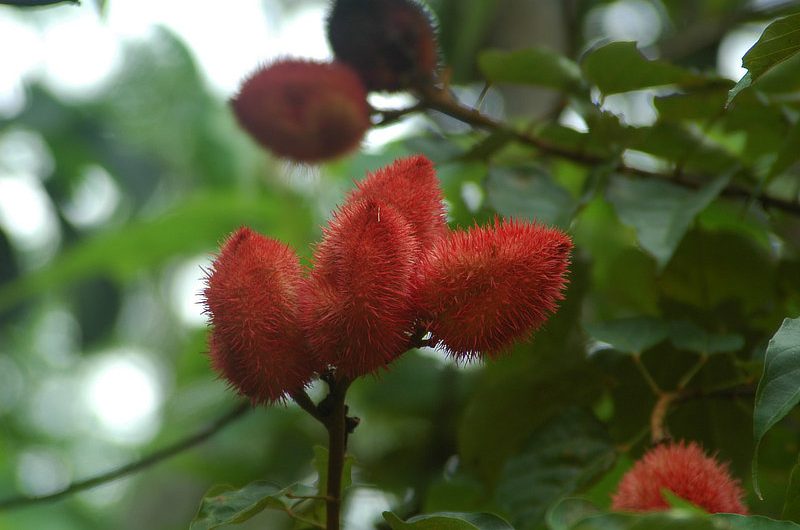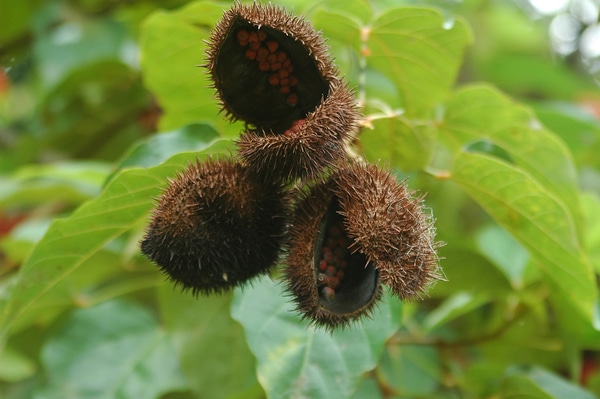Achiote
Bixa orellana
Achiote is a distinctive shrub or small tree in the family Bixaceae. The tree grows 6-10 meters tall and is identifiable by its bright white to pink flowers which form in clusters of five at the ends of branches, as well as by its fruits, clusters of red-brown seed pods covered in soft spines. Each pod contains many seeds covered in a waxy red aril layer. Dry pods split open when mature, exposing the seeds (see photo below).
Achiote is familiar in the Neotropics as the source of “annatto,” a condiment and red food coloring that is widely used in the cuisine of Central and South America, Mexico, and the Caribbean. Annatto is made from the aril of the seeds, which contains carotenoid pigments such as red bixin and yellow norbixin. As a seasoning, annatto can be used to substitute for paprika and saffron. Achiote paste or sazón is a product consisting of the ground seed mixed with other spices. Achiote is now cultivated in many other countries with tropical or subtropical climates.
Achiote also has many traditional uses as a dye, from red body paint to hair dye, from which comes one of its common names, the “lipstick tree.” In Panama, the Emberá use Achiote seeds to dye Chunga palm fronds for weaving baskets, producing a vibrant red color.


